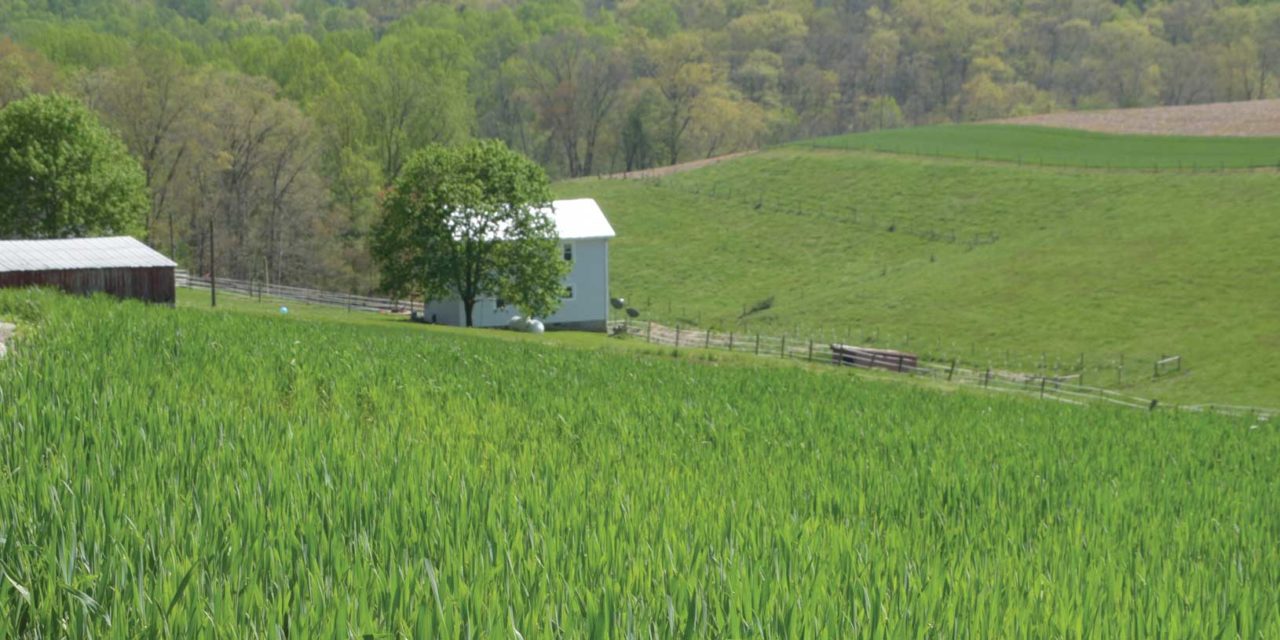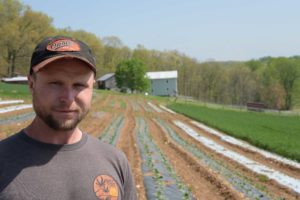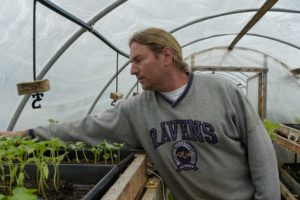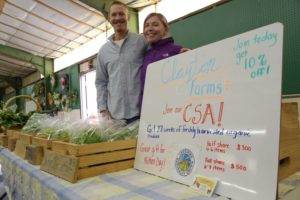by Rebecca Cartwright Wicke, photography by Gregory Blank
There’s a story that often times goes untold. It’s the story of a days-long journey across the country. Sounds like a road trip right? Except that those taking part in the journey are not people; they’re your produce.
It all starts on an industrial farm in California. The veggies, often times treated with pesticides and preservatives, get harvested one day and sometimes aren’t packaged for days later. Then, they make the long journey across the country to the grocery store shelf. The packaging claims that your salad is fresh, but is it really?
That’s a question Carroll County resident Cindy Eckenrode had asked herself before she started to participate in two CSAs (Community Supported Agriculture).
“Buying local allows you to know the grower, know where your food is coming from, and get the freshest produce available. There is less environment impact as there isn’t long distance transportation. It is good for the local economy to support our farmers in Carroll County,” she describes.
Eckenrode originally shopped for all of her produce at a local farmers market and became a regular customer for some of the vendors there. It was then that she decided to join a CSA. She pays for a share of seasonal fruits and vegetables from two local farms, Leigh View Farm and Richfield Farms.
Not only has she found her CSAs to be a way of staying healthy, but she also finds the mystery of what items she might get to be enticing. In a CSA, you don’t know what exactly you’re getting until you pick them up at the farm.
“When I saw what was in my CSA bags/box, I found recipes that included the ingredients, and that is how I planned my week’s menu. I was also able to freeze many items and used my CSA food throughout the winter months,” Eckenrode explains.
Every week for between 15 and 20 weeks, participants in a CSA stop by the farm to pick up their share and find out what produce they’ll be eating that week. Depending on the farm, a share in a CSA can cost anywhere from $20 to $40 per week, and many farms give you the option as to the size of the share.
For Megan and Bryce Fleharty, who participate in the summertime CSA at Lehigh View Farm in Union Bridge, the price is well worth the quality of produce.
“The quality of our food is worth the little bit extra we pay to get fresh, in season food. It’s fun to buy local and to get to know the people who are providing your food,” Megan explains.
That’s one of the major benefits of CSAs and co-op farming, according to Heather Kuykendall, the manager of the Carroll County Farmers Market.
“You know exactly where your produce came from. Everything is made by the person who is selling it. If customers come out and want to ask about processes, or if something is organic, or what chemicals may have been used, the farmers are right there on site,” Kuykendall describes.
The Carroll County Farmers Market, which is celebrating its 45th anniversary this year, and other local farmers markets have helped pair county residents, looking for fresh produce, with local farms. That’s how Jennifer Griffin, the owner of Lehigh View Farm, met many of her CSA participants.
She originally started the farm in 2009 as a way of increasing her income as a stay at home mom. She began by selling at the Downtown Westminster Farmers Market, and eventually decided to add a CSA due to her success at the market and the relationships that she was able to forge with customers there.
“We have customers who have been with our CSA program from the beginning and also weekly customers at the market who know they can trust our products. Our customers know that they can ask us questions and we will be happy to answer and educate,” Griffin explains.
Among the many perks of joining a CSA is trust—trust in the product and knowing where it came from, and trust in the farmer. As Greg Horner, owner of Deep Run Farms in Hampstead which operates a CSA, points out, you can’t always trust that what is in the grocery store is truly fresh or organic
“I never sell day old sweet corn. Everything I sell to customers has been picked in a 36 hour window,” he explains.
Not only does Horner warn against grocery store claims of offering fresh produce, but he also warns against them labeling produce as local.
“Even supermarkets who sell local could be from anywhere in a 400 to 500 mile radius. Do you consider anything in 400 to 500 miles to be local?” he questions.
While a CSA ensures that the produce is fresh and local, it does come with some risks. Many CSA programs require participants to sign a contract ahead of time to make sure that they understand that there might be a bad harvest or other factors that may dictate what they receive and when.
The other downside of CSAs can be the time commitment – rather than just grabbing produce while you’re at the grocery store, you must remember to make an extra trip out to the farm to pick your share for the week. For some, that can be a major turn off from buying local, either through CSAs or at farmers markets.
Tom Reinhardt, owner of Nev R Dun Farm in Westminster, which also runs a CSA program, finds that many people choose the grocery store over going to the farmers market or to farmers directly because of convenience. As he notes, it sometimes easier to go to the grocery store and get everything you need, than it is to take the time to go to different farmers and vendors.
“From our perspective, we’ve kind of been frustrated because the consumer wants ease of purchase, so they go to the grocery store,” he explains.
Nonetheless, the variety that’s available through CSAs makes it a great choice for varying up one’s palette, according to Eckenrode.
“Peas, green beans, beets, lettuce, spinach, onions, broccoli, cauliflower, various root vegetables, peppers, tomatoes, corn, potatoes, sweet potatoes, squash, eggplant, greens-collard, swish chard, etc. Berries, apples, peaches, plums, melons,” she muses, as she lists the seasonal produce she’s received through the two CSAs she participates in.
When it comes down to it, when you shop at the grocery store, you just don’t know where your produce has come from, who grew it, or what processes were used to grow it. You also don’t know where it’s been.
When vegetables arrive at the grocery store, they’ve already been on a journey. They’ve been across state lines, sometimes seeing more of the country than you have. Much of their time has been spent on a truck, waiting to reach their destination.




